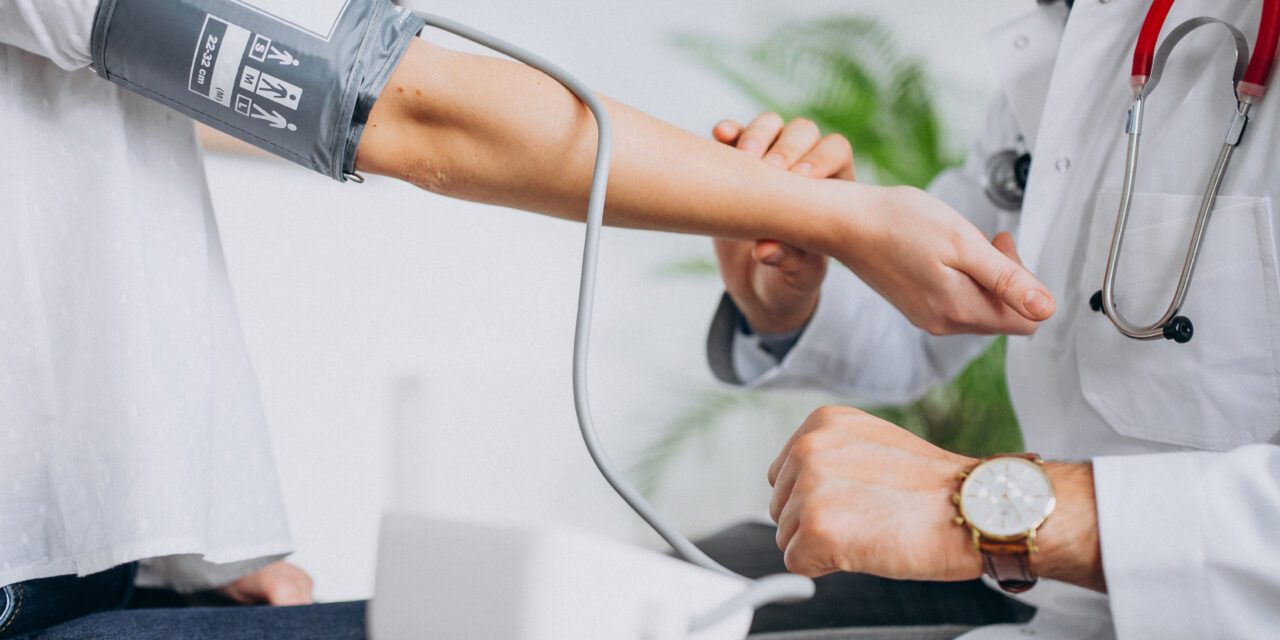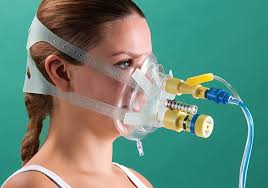Today I’ll be talking to you about blood pressure focusing on how to measure blood pressure. This information will cover a lot of ground by the end you’ll be able to define blood pressure including the difference between the systolic and diastolic pressure.
Learning objectives
- Define blood pressure, including the difference between systoling and diastolic pressure.
- Define the korotkoff sound and asuscultatory gap.
- Choose an appropriately sized blood pressure cuff.
- Demonstrate proper technique for manually measuring a patient’s blood pressure.
- List common pitfalls with blood pressure measurement.
- List indication for blood pressure measurement.
- Define hypertension and hypotension.
You can summarize these objectives as the what, how and why of measuring blood pressure.
What is blood pressure
Blood pressure is simply the pressure exerted by circulating blood on the walls of the arteries.
It is one of the most important physiological parameters of the body which is why it’s included.
The five vital signs
- Blood pressure
- Temperature
- Heart rate
- Respiratory rate
- Oxygen saturation
The physics of blood pressure is remarkably complex but the basic.
Factors Determining measure Blood pressure
- Heart rate
- Myocardial contractility
- Vascular tone
- Blood volume
- Blood viscosity
- Arterial compliance
What is systolic blood pressure?
Which refers to how much give or elasticity. The arteries have as a consequence of the cardiac cycle blood pressure is cyclical myocardial contraction is also called systole. So the high point of the blood pressure which occurs during contraction is call the systolic blood pressure.
What is diastolic blood pressure?
Relaxation of the heart is call diastole. And thus the low point of the blood pressure is occurring at the very end of diastole is calling the diastolic blood pressure.
What are millimeters of mercury?
Whenever you hear blood pressure reported as two numbers such as 150 over 80. That’s the systolic and diastolic pressure we use archaic units for measuring blood pressure called Millimeters of mercury.
Which refers back to the days when mercury manometers with a principle measuring tool. We don’t use mercury containing devices anymore due to concerns about their toxicity. But their associated units still persist before we get to the actual procedure of measuring blood pressure.
The Korotkoff sounds by measure blood pressure
There are two phenomena of which you need to be aware the Korotkoff sounds and the escola Tori gap the korotkoff sounds are
- Rhythmic noises heard in an artery that is being partially compressed by a blood pressure cuff.
- it occurs when such compressive pressure is between the person’s systolic and diastolic pressures.
That pressure is higher than systolic blood flow is cuting off all together. And that pressures lower than diastolic there is no compression of the artery at any point in the cardiac cycle. But when the pressure is in between the systolic and diastolic pressure the artery alternates between compressed and open creating turbulence and the korotkoff sounds. Something called an auscultatory gap.
Auscultatory gap
- An Auscultatory gap is present when there is a range of blood pressures, in between the systolic and diastolic, in which there are no korotkoff sounds.
- A failure to recognize an auscultatory gap can result in an underestimation of the systolic pressure, and/or an overestimation of the diastolic pressure.
The Equipment
- Stethoscope
- Sphygmomanometer
Sphygmomanometer most people colloquially call this thing a blood pressure cuff. Which is a misnomer since the cuff is only part of it specifically the part that goes around the patient’s arm. The other parts of the sphygmomanometer include the pressure gauge.
The inflation bulb used to inflate the cuff and a one-way valve. Which can be twist to regulate the flow of air from the cuff. Controlling its rate of deflation are depending on your equipment. The gauge may be either mounted on the wall attached to a small rolling stand. Or be small enough to be hook directly onto the cuff.
Timing of BP Measurement
- Blood pressure varies though out the day.
- Blood pressure can be temporarily affected by exercise or caffeine consumption within the prior 30 minutes.
- For patients taking anti-hypertensive medications, it’s preferable to measurethe blood pressure immediately before the meds are usually taken, though this is often not practical.
If a patient’s clinic visit is relatively late in the day in addition. There may be specific situations in which measurement shortly after meds are take instead preferred for example. If a patient has been complaining of lightheadedness. Which could be due to excessive medication.
What’s the actual procedure
- Ask patient to empty the bladder.
- Patient should be resting in a quiet room for at least 5 minutes
- Wash/sanitizer your hands
Properly position the patient:
- Back supported
- Both feet flat on the floor
- Arm supported at the level of the heart
- It usually doesn’t matter which arm, but you should avoid checking the blood pressure in the same arm as a patient’s hemo dialysis access.
- Ensure that the upper arm can be exposed without constriction from a tightly rolled-up sleeve.
Select the proper sized cuff:
There is some variability between different manufacturers. But most have about five sizes of arm cuffs ranging from infant to a large adult with a sixth extra-large size labeled thigh guidelines. Recommend that the length of the bladder inside. The length of the cuff bladder should be at least 80% the arm circumference.
- Wrap the cuff around the arm such that the bottom edge is about two to three centimeters above the crease of the elbow
- Aligned to rest over the approximate location of the brachial artery .
Measurement of blood pressure:

- Fast, determine the pulse obliteration pressure.
- The pressure at which the pulse disappears is approximately the systolic blood pressure.
- Place stethoscope head over the brachial artery.
- Inflate the cuff to 30mmhg above the pulse obliteration pressure.
- Decrease cuff pressure by 2mmhg for each heartbeat.
- The point at which the korotkoff sounds are first heard is the systolic blood pressure.
- The point when they disappear is the diastolic blood pressure.
- Continue to slowly deflate for at least 10mmHg more.
- Repeat the procedure at least twice.
- The final recorded blood pressure should be the average of all recording in the same sitting, rounded off to the nearest 2mmHg.
Visible movement of the gauge needle should not be use as a surrogate for measure blood pressure.
Five common mistakes:
- Failing to allow patient to first rest quletly for 5 min.
- Not changing to an appropriately sized cuff.
- Not checking the pulse obliteration pressure
- .Allowing the patient to support their own arm.
- Deflating the cuff too quickly.
Indications for blood pressure measurement:
If you are a health care professional evaluating a patient, you should be checking the patient’s blood pressure, irrespective of:
- Patient’s age
- Reason for evaluation
- Presence or absence of symptoms
- Location of care
(Exception: Healthy children under 3 years at a well child visit)
Abnormalities of blood pressure
- Hypertension ( BP is too high)
- Chronic Hypertension
SBP ≥ 140mmHg
Or
DBP≥ 90mmHg
At 2 separate visits
- Acute Hypertension
No specific threshold
Consider patient’s baseline BP, other medical problem, and the speed with which hypertension has developed.
- Hypotension ( BP is too low)
- Acute
No specific threshold
Consider patient’s baseline BP, other medical problem, and symptoms/sings of end-organ dysfunction.
If it progresses may lead to death that concludes this information on blood pressure measurement. I hope you found it to be helpful. If so please remember to comment me.
Learn more about this topics click the link






This really answered my downside, thanks!
Enjoyed studying this, very good stuff, thankyou.
This is the right blog for anyone who wants to find out about this topic. You realize so much its almost hard to argue with you (not that I actually would want…HaHa). You definitely put a new spin on a topic thats been written about for years. Great stuff, just great!
Can you be more specific about the content of your article? After reading it, I still have some doubts. Hope you can help me.
Today, while I was at work, my cousin stole my iPad and tested to see if it can survive a 30 foot drop, just so she can be a youtube sensation. My apple ipad is now broken and she has 83 views. I know this is completely off topic but I had to share it with someone!
I don’t think the title of your article matches the content lol. Just kidding, mainly because I had some doubts after reading the article.
Your article helped me a lot, is there any more related content? Thanks!
Your article helped me a lot, is there any more related content? Thanks!
Perfect work you have done, this internet site is really cool with excellent information.
Excellent post. I was checking continuously this blog and I’m impressed! Very useful information specifically the last part 🙂 I care for such info much. I was seeking this particular information for a long time. Thank you and good luck.
The Writing has become a go-to resource for me. The effort you put into The posts is truly appreciated.
Youre so cool! I dont suppose Ive read anything like this before. So nice to search out any person with some unique ideas on this subject. realy thanks for beginning this up. this web site is something that is wanted on the internet, someone with somewhat originality. useful job for bringing something new to the internet!
Can you be more specific about the content of your article? After reading it, I still have some doubts. Hope you can help me.
The insights are like keys, unlocking new perspectives and ideas I hadn’t considered.
I couldn’t resist commenting
Reading this gave me a lot of insights. The expertise really shines through, and I’m grateful for it.
The writing has the warmth and familiarity of a favorite sweater, providing comfort and insight in equal measure.
I’m impressed by The ability to convey such nuanced ideas with clarity.
I love reading through and I conceive this website got some genuinely useful stuff on it! .
Your point of view caught my eye and was very interesting. Thanks. I have a question for you.
I don’t think the title of your article matches the content lol. Just kidding, mainly because I had some doubts after reading the article.
I don’t think the title of your article matches the content lol. Just kidding, mainly because I had some doubts after reading the article.